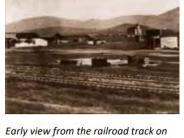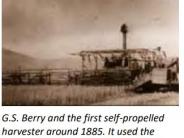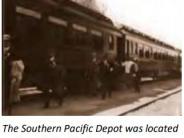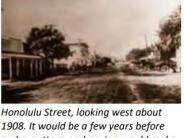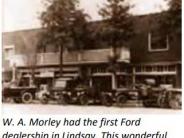251 E. Honolulu St.
Lindsay, CA 93247
559-562-7102
City of Lindsay History
When Thomas Orton, an immigrant from England, landed in Boston harbor in 1635, he had little idea one of his descendants would be planting the first of many orange trees some seven generations and 245 years later, in Lindsay, California, 3,000 miles to the west.
Julius Orton, a seventh-generation descendant of Thomas, was born in Ohio in 1825. The family moved to Missouri in 1838. Julius enlisted as a teamster in the U. S. Army during the Mexican-American War of 1846. He then served as a guard for a pack-train crossing the plains to Placerville, a booming California gold mining town.
Finding no gold, Julius moved to Soquel, a lumber town near Santa Cruz, where he worked as a laborer and eventually acquired his own herd of cattle. In 1859, accompanied by his wife and two daughters, and driving a small herd of cattle, he walked more than 200 miles from the coast to a homestead along the Tule River southwest of Lindsay.
Julius Orton became a part of Lindsay history in the 1880's when he took up a second 160-acre homestead on land adjacent to the property of Lewis and John Keeley, brothers who had homesteaded a few miles southwest of Lindsay in the mid 1870's.
Julius Orton is credited with planting the first orange trees in the Lindsay district on his homestead, giving rise to the motto, "Central California's Citrus Center."
The Ortons and Keeleys were not the first inhabitants of the district. Members of the Yandanche Indian tribe had for centuries lived, hunted, and fished in the valley by way of Lewis Creek canyon. Captain John Fremont passed by the site of Lindsay twice on exploration trips, following what later became the Butterfield Stage route.
John J. Cairns, a Scotsman by birth, came to the Lindsay area in 1881. His first venture was as a sheep rancher, followed by cattle, and then as a grower of 22,000 acres of grain in Tulare and northern Kern counties. He is also credited with the development of water wells which encouraged the further development of citrus acreage. The Cairns homestead property and citrus orchard, bordered by century old olive trees, still exists at Cairns Corner west of Lindsay.
Capt. Arthur J. Hutchinson, known as the founder of the City of Lindsay, came to the area in 1889. He was born in Bermuda, where his father was assigned by the British government and served for a time as governor. Capt. Hutchinson was a Royal Military College graduate and served in India until 1879, when illness forced his retirement. Coming to California for his health, he moved to the Lindsay area, bought 2,000 acres and formed the Lindsay Land Company.
Development of the Lindsay townsite began under the Pacific Development Company when the Southern Pacific Railroad came through the area in 1889.
The townsite was laid out by Capt. Hutchinson and the community was named for his wife, Sadie Lindsay Patton Hutchinson. Stockton Berry migrated to the area about the same time as Capt. Hutchinson and farmed several thousand acres of grain, grapes and oranges to the northeast of Lindsay.
In addition to farming, Stockton Berry invented the first tractor drawn grain harvester, revolutionizing the industry. He developed an efficient method for using electric motors and power for drilling wells and pumping water.
The advent of the 20th century saw an increase of population in the area. Jobs were available in the increased orange and olive plantings. Many others worked in timber and mining operations in the mountains to the east. By 1905, approximately 700 acres of oranges had been planted in the district, but only a few were in full bearing.
The increase in population which followed the arrival of the railroad included many persons interested in development of a town site. Excursion trains from southern California arrived every few weeks carrying people interested in settling in the Lindsay area. This influx of people sparked the development of some 75,000 acres of land by 1910, along with packing houses to process the agricultural products.

